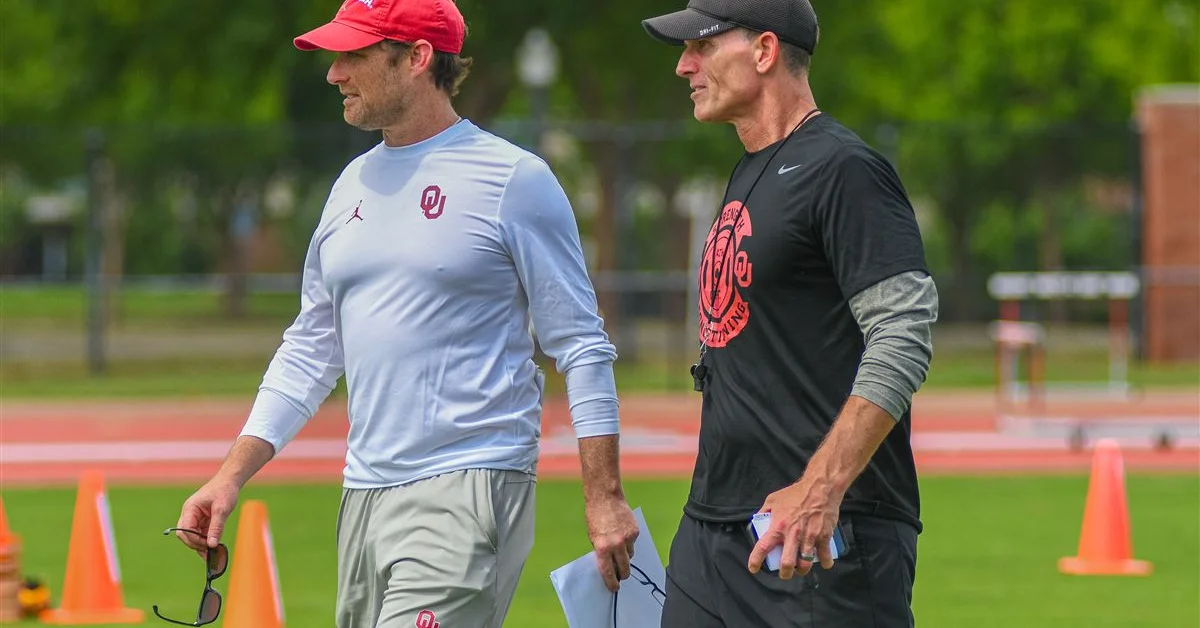Oklahoma’s 2026 In-State Recruiting Stance Marks Drastic Shift From Aggressive Homegrown Strategy Seen in Past Two Cycles
Oklahoma football’s approach to in-state recruiting in the 2026 cycle is turning heads for all the wrong reasons—and for those who’ve followed the Sooners’ hyper-local dominance in the past two classes, the shift is almost jarring. What was once a foundation of Brent Venables’ recruiting blueprint has morphed into a quiet departure from the homegrown focus, raising eyebrows within the state and beyond.
In 2024 and 2025, Oklahoma built a recruiting wall around its borders. Local stars were not only prioritized—they were locked in early and celebrated. From Micah Tease to Xadavien Sims, from standout offensive linemen to top-tier skill position players, Venables and his staff had cultivated a reputation of owning Oklahoma. Their message was clear: The best in-state players don’t need to look anywhere else.
But in 2026, the landscape looks entirely different.
As of July 2025, Oklahoma has only one in-state commitment in the 2026 class: four-star linebacker Kaden Harjo from Norman. Beyond Harjo, there’s little traction on other elite in-state prospects. Meanwhile, top Oklahoma talents like Booker T. Washington receiver Ty Hawkins and Midwest City’s elite pass rusher Mason Jennings are trending elsewhere, with out-of-state powerhouses like Texas, Alabama, and Georgia leading their recruitment.
The drop-off is stark—and it’s strategic.
According to those close to the program, Oklahoma’s 2026 approach is about selectivity and national positioning. Venables has always emphasized “fit” over flair, and this cycle appears to be a deliberate pivot toward landing specific out-of-state targets who match Oklahoma’s evolving identity. With the Sooners moving deeper into SEC waters, the coaching staff seems determined to prove it can swim with the sharks of the recruiting world.
In previous cycles, the priority was to dominate Oklahoma and fill out the class with regional SEC talent. Now, it’s reversed. The 2026 class is being shaped primarily through national recruiting battles. The Sooners are in on players from Florida, Georgia, Louisiana, and California—regions they once dipped into only sparingly. This strategy aligns with the recruiting demands of the SEC, where national reach is a prerequisite for title contention.
However, this pivot comes at a potential cost.
Oklahoma high school coaches and alumni have noticed the shift. The concern isn’t that Oklahoma is recruiting nationally—it’s that the emphasis on in-state bonds has weakened. For years, local players dreamed of wearing the crimson and cream. With the change in tone, some fear the program is sending mixed signals to its own backyard.
One long-time high school coach in Tulsa put it bluntly: “Oklahoma used to show up to our games. Lately, we haven’t seen them much. These kids notice that.”
Recruiting is perception-based. Even if the Sooners believe they can circle back late in the cycle, early impressions matter. Texas has made a concerted effort to make inroads into Oklahoma territory, especially in the Tulsa and Oklahoma City areas. The Longhorns now carry a presence that hasn’t existed since the early 2010s. If OU isn’t careful, it risks ceding ground that once felt impenetrable.
To be clear, this is not a sign of Oklahoma struggling in recruiting. Nationally, the Sooners’ 2026 class remains inside the top 15, and their out-of-state blue-chip haul includes offensive linemen and defensive backs with SEC-ready traits. But the philosophical shift raises a question: Can Oklahoma afford to take its eyes off in-state talent?
There’s also the looming question of sustainability. National recruiting success often hinges on momentum. One down year, one staff change, or a losing season can shift the tides quickly. But strong in-state ties often endure instability. Players who grow up watching OU, who have family ties to Norman, are more likely to remain loyal through coaching shifts and tough stretches.
The 2026 cycle may ultimately be remembered as a gamble. If Oklahoma’s national approach delivers elite talent and top-10 recruiting finishes, it will be seen as a strategic masterstroke that signaled their SEC evolution. But if the Sooners strike out on a few of their top national targets while letting local stars escape to rivals, the criticism could be swift.
There’s still time for course correction. The early signing period is months away, and official visits in the fall could help rekindle in-state momentum. Venables has always emphasized player development, and Oklahoma’s 2024 and 2025 hauls have given the coaching staff a strong foundation. But the Sooners cannot assume that past success will carry forward without continuous investment in their local ties.
Another subplot that adds intrigue is Oklahoma State’s quiet in-state resurgence. The Cowboys have steadily gained traction with players who may have otherwise leaned toward the Sooners. Mike Gundy and his staff are pitching stability and a chance to play early. If Oklahoma continues to pass on in-state prospects, don’t be surprised if OSU becomes the beneficiary.
More than anything, the 2026 recruiting situation represents a philosophical crossroads for Oklahoma football.
Do the Sooners believe their SEC ambitions require a national-only recruiting identity? Or can they continue to blend national reach with local dominance, the way programs like Alabama and Georgia have done for years?
Venables’ track record suggests he values loyalty, culture, and physicality—all traits often found in Oklahoma-grown athletes. But in the arms race of SEC recruiting, raw athleticism and five-star pedigree often trump geography. Oklahoma’s 2026 class seems to lean toward the latter.
Time will tell if the Sooners can strike the right balance. The state of Oklahoma may not produce dozens of five-star prospects annually, but the ones it does produce are often battle-tested, coachable, and deeply connected to the program’s legacy. That used to be the bedrock of OU recruiting.
In this new era, Oklahoma is testing a different formula—one built on national reputation and strategic precision. It might work. But it’s a gamble.
And in the competitive cauldron of the SEC, every decision has consequences.



